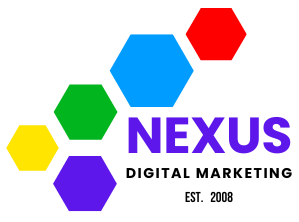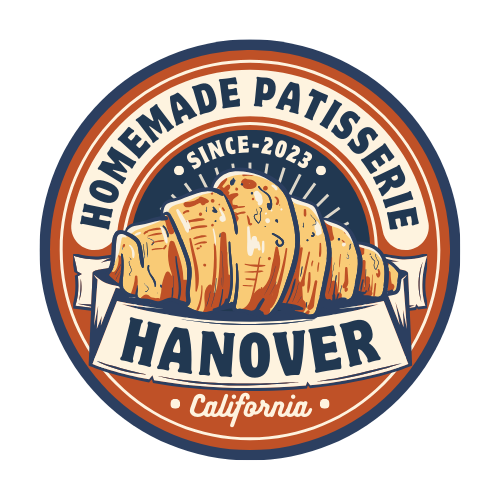The Digital Strategy That’s Powering 78% of Utah’s Fastest-Growing Businesses (And Why Others Are Being Left Behind)
Utah’s Business Landscape Is Shifting Beneath Your Feet
The numbers don’t lie. Utah’s business growth has outpaced the national average by 41% over the past three years, with Salt Lake City alone adding over 2,400 new businesses in 2023. But beneath these impressive statistics lies a startling reality: not all Utah entrepreneurs are riding this wave of prosperity. In fact, a growing digital divide is separating those businesses experiencing exponential growth from those struggling to maintain market share.
Recent data from the Utah Economic Council reveals that 78% of the state’s fastest-growing companies are implementing a specific digital marketing approach that their competitors have largely overlooked. This strategy isn’t particularly complex or expensive—but it requires a fundamental shift in thinking that many traditional Utah business owners have resisted.
“We kept hearing about digital transformation, but we thought our established reputation would carry us through,” explains James Harding, founder of Salt Lake City’s Wasatch Building Materials, whose 32-year-old company saw revenues decline for three consecutive quarters in 2022. “Then we watched newer companies with a fraction of our experience capturing our customers. We knew something had to change.”
That change came in the form of a digital strategy that has become the not-so-secret weapon of Utah’s most successful entrepreneurs—a strategy that combines hyper-localized content marketing with sophisticated data analytics to create what insiders are calling the “Utah Advantage.”
The “Utah Advantage”: How Local Businesses Are Leveraging Their Home Territory
The strategy that’s revolutionizing Utah’s business landscape isn’t about trendy technologies or gimmicks. It’s about leveraging what Utah entrepreneurs already have in abundance: intimate knowledge of their communities, combined with sophisticated data-driven targeting that national competitors simply can’t match.
At its core, the approach involves developing deeply localized content marketing assets that speak directly to the unique needs, values, and pain points of Utah’s distinct communities—from Park City’s affluent outdoors enthusiasts to Provo’s family-focused tech workers. But where previous localization efforts often stopped at mentioning local landmarks or events, today’s successful Utah entrepreneurs are taking this strategy to unprecedented levels of sophistication.
“We’re not just creating content that mentions Utah—we’re developing resources that address the specific challenges our local customers face,” explains Meredith Chen, founder of Lehi-based Mountain Peak Financial Planning, whose client base grew by 143% after implementing this strategy. “For example, we created detailed financial planning guides addressing the unique tax implications for Utah’s growing remote worker population. This level of specificity immediately separates us from national competitors relying on generic content.”
The “Utah Advantage” strategy combines three critical elements that, when implemented together, create a powerful competitive moat that national chains and even well-funded startups struggle to overcome:
1. Hyper-Localized Content Development
The first component involves creating content that addresses micro-regional issues within Utah’s diverse communities. This goes far beyond simply mentioning local landmarks or events—it requires developing in-depth resources that address specific challenges facing particular neighborhoods, professional communities, or demographic groups within the state.
David Ortega, who transformed his struggling Park City restaurant during the pandemic, attributes much of his success to this approach: “We created neighborhood-specific meal packages that addressed the distinct preferences of Prospector, Old Town, and Deer Valley residents. Our content didn’t just mention these areas—it spoke directly to their lifestyle challenges during specific seasons and events. Our take-out revenue increased 215% during a time when similar restaurants were closing.”
Successful practitioners of this strategy typically develop at least 15-20 pieces of hyper-localized content targeting different micro-communities within their service area. These resources often include:
Community-Specific Guides
These comprehensive resources address challenges unique to specific Utah communities. Effective examples include seasonal guides for navigating Sugar House’s evolving restaurant scene or managing property maintenance challenges in Cedar City’s variable climate.
Localized Case Studies
Documentation of successful projects or client outcomes within specific Utah neighborhoods carries extraordinary persuasive power. Potential customers can literally see results achieved for businesses or homeowners in their immediate vicinity.
Neighborhood-Specific Service Packages
Many successful Utah businesses are developing service offerings tailored to the unique needs of specific communities. For example, one Ogden-based landscaping company created distinct maintenance packages for each of the city’s seven distinct neighborhoods, addressing their unique soil conditions, elevation challenges, and typical property sizes.
2. Precision Data Analytics
While the creation of localized content provides the foundation, the strategy’s second component—sophisticated data analytics—is what truly separates today’s successful Utah entrepreneurs from previous generations.
“The game-changer wasn’t just creating Utah-focused content—it was using data to determine exactly which local topics would resonate with our target customers,” explains Eric Sanchez, founder of SLC Home Services, whose revenue grew 87% year-over-year after implementing this approach. “We analyzed thousands of search queries to identify specific home maintenance challenges Utah homeowners were experiencing during different seasons and in different neighborhoods.”
The most successful practitioners of the “Utah Advantage” strategy are leveraging multiple data sources to guide their content development and distribution, including:
Local Search Trend Analysis
By examining geographic-specific search patterns, businesses can identify seasonal trends, emerging concerns, and unaddressed needs within specific Utah communities. This allows them to develop content that addresses these topics before competitors even recognize the opportunity.
Micro-Demographic Targeting
Utah’s communities often contain distinct demographic groups with varying needs. Advanced data analytics allows businesses to segment their audiences with remarkable precision, sometimes targeting areas as specific as individual apartment complexes or office parks with tailored messaging.
Competitive Gap Analysis
The most sophisticated practitioners regularly analyze competitor content strategies to identify underserved topics and communities. This systematic approach to finding “content gaps” creates opportunities to establish authority in areas competitors have overlooked.
3. Community-Based Distribution Networks
The third component of the strategy involves developing sophisticated, relationship-based distribution networks that leverage Utah’s strong community connections and distinctive local platforms.
“Creating great local content wasn’t enough—we needed to ensure it reached our target customers through channels they actually trusted,” says Chen. “We developed partnerships with 14 local organizations, from neighborhood associations to professional groups, giving us distribution channels our national competitors couldn’t access.”
These distribution networks typically include:
Local Influencer Partnerships
Rather than pursuing high-cost national influencers, successful Utah businesses are building relationships with community-specific voices of authority—from neighborhood Facebook group administrators to respected local professionals with strong social followings.
Community Organization Alliances
Strategic partnerships with neighborhood associations, professional organizations, and local interest groups provide access to highly engaged community members through trusted channels like email newsletters, online forums, and in-person events.
Neighborhood-Level Digital Targeting
Advanced geotargeting capabilities now allow businesses to deliver different messages to residents of specific Utah neighborhoods, ensuring content relevance while maximizing marketing efficiency.
Real-World Results: Utah Businesses Transformed
The “Utah Advantage” strategy has delivered remarkable results for businesses across diverse industries. Three case studies illustrate the transformative potential of this approach:
Case Study #1: From Struggling Restaurant to Community Hub
When COVID-19 threatened to destroy David Ortega’s 12-year-old Park City restaurant, he knew traditional approaches wouldn’t save his business. “Large delivery apps were taking 30% of our already-thin margins, and we were competing against every restaurant in the area,” he recalls.
Ortega implemented the “Utah Advantage” strategy by developing neighborhood-specific meal packages addressing the distinct preferences of different Park City communities. His team created detailed audience personas for seven micro-communities within their delivery area and developed content resources tailored to each group’s specific needs.
“For Prospector residents, we created family meal bundles with kid-friendly options, while our Old Town packages focused on couples with sophisticated wine pairings,” Ortega explains. “But the real magic happened when we analyzed local search data and discovered massive unmet demand for specialized diet options in certain neighborhoods.”
The restaurant created neighborhood-specific resources addressing keto, paleo, and plant-based dining options, with each guide incorporating references to neighborhood-specific lifestyle factors. These resources were distributed through partnerships with 11 community organizations, from HOAs to local fitness studios.
The results were transformative: take-out revenue increased 215% during 2021, and the restaurant emerged from the pandemic stronger than before, with 2023 revenues 32% higher than pre-pandemic levels.
Case Study #2: Financial Planner Outcompetes National Firms
When Meredith Chen founded Mountain Peak Financial Planning in Lehi, she faced intense competition from both established local firms and digital-first national competitors with massive marketing budgets.
“As a new firm without an established reputation, we knew we couldn’t compete on traditional factors like years of experience,” Chen explains. “We needed to establish ourselves as the definitive experts for specific client segments within our community.”
Chen implemented the “Utah Advantage” strategy by developing deeply specialized content resources addressing the unique financial challenges facing Utah’s growing tech workforce. Rather than creating generic financial planning guides, her team developed neighborhood-specific resources that addressed the particular concerns of tech professionals in different life stages and communities.
“We created a financial planning guide specifically for tech workers living in the Traverse Mountain area of Lehi, addressing everything from their unique stock compensation packages to the property tax implications of homes in that specific community,” Chen explains. “This level of specificity immediately separated us from competitors producing generic content.”
The firm also analyzed local search data to identify specific financial concerns that were underserved by existing content. “We discovered that many Utah tech workers were searching for guidance on managing equity compensation while serving religious missions—a topic that national competitors completely overlooked,” says Chen.
By developing comprehensive resources addressing these hyper-specific intersections of financial planning and Utah’s unique cultural factors, the firm established itself as the definitive expert for this valuable client segment. The approach fueled 143% growth in their client base within 18 months, with client acquisition costs 68% lower than industry averages.
Case Study #3: Home Services Company Expands into New Territories
Eric Sanchez founded SLC Home Services with a vision of building Utah’s most trusted residential maintenance company. However, competing against established companies with decades-long community presence proved challenging.
“We were the new guys, competing against companies that had serviced some neighborhoods for generations,” Sanchez recalls. “Traditional marketing wasn’t moving the needle—we needed to establish ourselves as the definitive local experts.”
Sanchez implemented the “Utah Advantage” strategy by creating neighborhood-specific maintenance guides addressing the unique challenges facing homeowners in different Salt Lake City communities. These weren’t generic home maintenance tips—they were deeply specialized resources addressing specific issues like managing ice dams on historic Avenues homes or preventing foundation damage in Sandy’s expansive clay soils.
“We created 22 neighborhood-specific guides, each addressing maintenance challenges unique to that area’s home age, construction methods, and environmental factors,” explains Sanchez. “When homeowners found resources speaking directly to the issues they faced in their specific community, our credibility skyrocketed.”
The company also leveraged data analytics to identify seasonal maintenance concerns in different neighborhoods, developing automated email campaigns delivering preventive maintenance advice tailored to specific home types and locations.
This approach generated remarkable results: the company’s revenue grew 87% year-over-year, with customer acquisition costs 54% below industry averages. Even more impressive, their customer lifetime value increased by 113% as their expertise-driven approach generated both higher initial project values and stronger long-term client relationships.
The Critical Elements: What Makes This Strategy Work in Utah
Utah’s business environment provides unique advantages for implementing this strategy that don’t exist in every market. Understanding these factors is crucial for successful implementation:
Utah’s Community Dynamics
The state’s strong community bonds and distinct neighborhood identities create natural micro-markets that can be targeted with specialized messaging. “Utah residents have unusually strong connections to their specific communities,” explains marketing strategist Emma Larson of Salt Lake City’s Elevation Marketing. “They don’t just live in Salt Lake City—they live in Sugar House or the Avenues, and they strongly identify with those communities.”
This community identification creates opportunities for businesses that can speak directly to the specific concerns, values, and identity of these micro-communities. “When a business demonstrates deep understanding of a specific Utah neighborhood or community, they trigger a trust response that generic competitors simply cannot match,” Larson notes.
The Data Advantage
Utah’s concentrated population along the Wasatch Front creates unusually rich data sets that businesses can leverage to identify community-specific needs and preferences. “The density of our population centers means businesses can gather statistically significant data about very specific geographic areas,” explains data analyst Jordan Williams of Salt Lake City’s Data Mountain. “This creates opportunities for insights that wouldn’t be possible in more dispersed markets.”
Williams notes that Utah’s high digital engagement rates further enhance this advantage: “Utah residents are among the most digitally connected in the nation, which creates unusually rich digital footprints that sophisticated businesses can analyze to identify emerging needs and preferences at the neighborhood level.”
The Implementation Gap
Perhaps the most significant factor driving the strategy’s success is the implementation gap between early adopters and traditional businesses. “Many established Utah businesses are still relying on their historical reputation and traditional marketing approaches,” observes Larson. “This creates a significant opportunity for businesses willing to implement these more sophisticated, data-driven approaches to rapidly capture market share.”
This implementation gap is closing rapidly, however, as more Utah businesses recognize the strategy’s effectiveness. “We’re seeing adoption rates accelerate dramatically,” notes Williams. “Businesses that delay implementation are likely to find themselves playing catch-up in an increasingly competitive environment.”
Implementing the “Utah Advantage” Strategy: A Framework for Success
While the specific tactics will vary by industry and target market, successful implementation of the “Utah Advantage” strategy typically follows a consistent framework:
Step 1: Community Mapping
The process begins with identifying the specific micro-communities within your service area that represent the highest-value opportunity. This mapping process should consider factors beyond simple geography, including:
• Demographic concentrations with specific needs aligned with your offerings
• Communities with high concentrations of your ideal customer profile
• Areas with limited competition for your specific services
• Neighborhoods with community infrastructure (online groups, publications, organizations) that can support content distribution
Step 2: Data-Driven Need Identification
Once target communities are identified, successful implementers conduct rigorous data analysis to identify specific unmet needs and information gaps within these communities. This typically involves:
• Analysis of local search trends to identify common questions and concerns
• Review of social media conversations to identify recurring challenges
• Competitive content analysis to identify underserved topics
• Interviews with community members to uncover unstated needs
Step 3: Content Asset Development
With target communities and needs identified, the next step involves creating content assets that address these specific community needs with unprecedented depth and relevance. These assets typically include:
• Community-specific guides addressing neighborhood challenges
• Local case studies featuring recognizable locations and situations
• Comparison resources addressing options available within specific areas
• Seasonal preparation resources tailored to community-specific concerns
Step 4: Distribution Network Development
The final step involves creating distribution channels that reach target community members through trusted local sources. This network typically includes:
• Partnerships with neighborhood organizations and publications
• Relationships with community-specific online groups and forums
• Alliances with complementary local businesses serving the same communities
• Geographically-targeted digital campaigns focusing on specific neighborhoods
The Future of Local Marketing in Utah
As more Utah businesses adopt elements of this strategy, the competitive landscape will continue to evolve. Industry experts anticipate several emerging trends:
First, the sophistication of local targeting will increase as more businesses leverage advanced data analytics. “We’re seeing the early adopters now investing in predictive analytics to identify emerging community needs before they appear in search data,” notes Williams. “This allows them to develop content addressing these needs before competition emerges.”
Second, community-specific customer experience will become a key competitive differentiator. “The next evolution of this strategy involves creating service delivery models customized to specific community needs,” explains Larson. “This might include neighborhood-specific service hours, specialized staff for particular communities, or service offerings available only in certain areas based on demonstrated demand.”
Finally, businesses implementing these strategies will increasingly formalize their community relationships through sponsorships, partnerships, and physical presence. “The most sophisticated practitioners are establishing micro-offices or community spaces within specific neighborhoods,” notes Larson. “This creates a physical manifestation of their community commitment that further separates them from digital-only competitors.”
The Window of Opportunity Won’t Stay Open Forever
For Utah entrepreneurs who haven’t yet implemented elements of the “Utah Advantage” strategy, the opportunity remains substantial but is narrowing as adoption accelerates.
“We’re at an inflection point where this approach is transitioning from competitive advantage to competitive necessity,” warns Williams. “Businesses that delay implementation risk finding themselves permanently behind as early adopters establish deep community connections that become difficult to displace.”
The good news is that the strategy remains accessible to businesses of all sizes. “This isn’t about outspending competitors—it’s about outsmarting them through deeper community understanding,” notes Larson. “A small business with intimate local knowledge can still implement this approach more effectively than a large competitor with a bigger budget but less community insight.”
James Harding of Wasatch Building Materials, who initially resisted the digital transformation, now advocates for this approach after seeing his company’s fortunes reverse: “We went from three quarters of decline to 26% year-over-year growth after implementing this strategy. My only regret is that we didn’t start sooner.”
For Utah entrepreneurs watching their competition pull ahead through these approaches, the message is clear: the time to implement is now, before the competitive advantage becomes a competitive requirement.
Nexus DMS helps Utah businesses implement the “Utah Advantage” strategy with sophisticated data analytics, hyper-localized content development, and community-based distribution networks. To learn how your business can leverage these approaches before the opportunity window closes, contact our Utah strategy team for a free competitive analysis.








